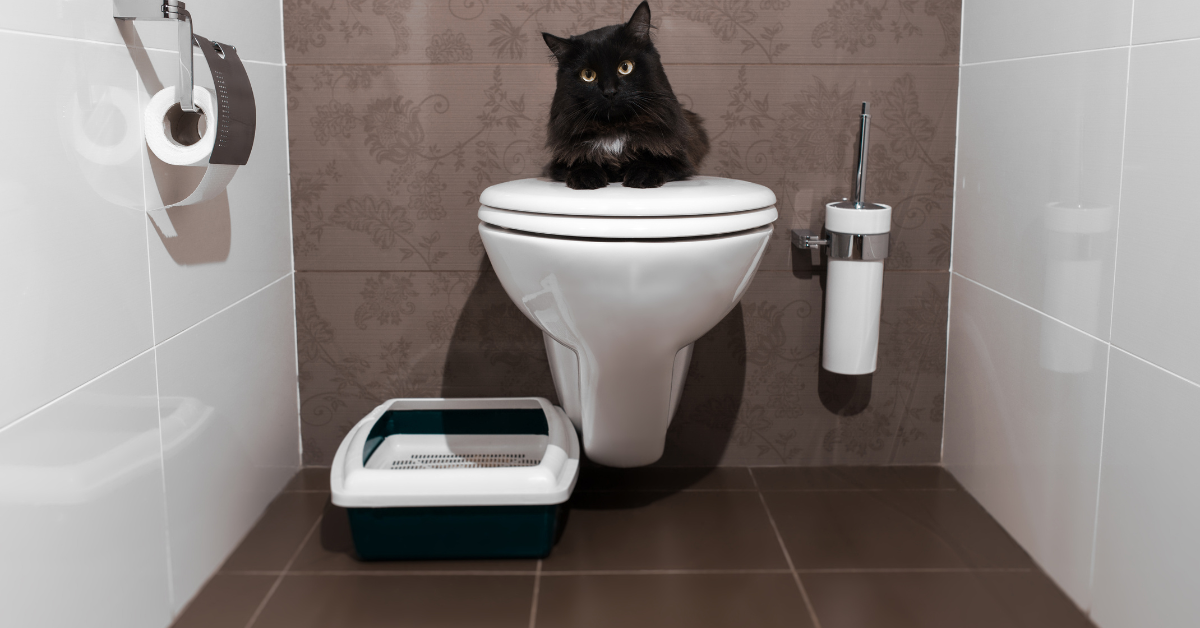This article which follows relating to Don’t flush cat feces down the toilet is incredibly engaging. Give it a go and make your own personal conclusions.

Introduction
As feline proprietors, it's important to be mindful of exactly how we get rid of our feline good friends' waste. While it may seem practical to purge pet cat poop down the commode, this practice can have harmful effects for both the setting and human health.
Alternatives to Flushing
Thankfully, there are much safer and extra liable ways to deal with cat poop. Consider the following alternatives:
1. Scoop and Dispose in Trash
The most usual method of taking care of cat poop is to scoop it into a naturally degradable bag and throw it in the trash. Make sure to make use of a specialized litter inside story and deal with the waste promptly.
2. Use Biodegradable Litter
Opt for biodegradable cat trash made from products such as corn or wheat. These trashes are environmentally friendly and can be safely dealt with in the garbage.
3. Hide in the Yard
If you have a lawn, think about burying pet cat waste in a designated area far from veggie gardens and water sources. Make certain to dig deep enough to stop contamination of groundwater.
4. Mount a Pet Waste Disposal System
Buy a pet garbage disposal system particularly developed for cat waste. These systems make use of enzymes to break down the waste, lowering smell and environmental impact.
Health Risks
Along with ecological worries, purging cat waste can additionally present health threats to humans. Pet cat feces might include Toxoplasma gondii, a parasite that can trigger toxoplasmosis-- a potentially extreme disease, particularly for expecting females and individuals with weakened body immune systems.
Environmental Impact
Flushing feline poop introduces harmful virus and parasites right into the water, posturing a substantial risk to marine environments. These contaminants can adversely affect marine life and compromise water top quality.
Conclusion
Accountable pet ownership expands beyond providing food and sanctuary-- it also includes proper waste monitoring. By refraining from flushing pet cat poop down the toilet and going with alternative disposal techniques, we can decrease our environmental impact and protect human health and wellness.
Why Can’t I Flush Cat Poop?
It Spreads a Parasite
Cats are frequently infected with a parasite called toxoplasma gondii. The parasite causes an infection called toxoplasmosis. It is usually harmless to cats. The parasite only uses cat poop as a host for its eggs. Otherwise, the cat’s immune system usually keeps the infection at low enough levels to maintain its own health. But it does not stop the develop of eggs. These eggs are tiny and surprisingly tough. They may survive for a year before they begin to grow. But that’s the problem.
Our wastewater system is not designed to deal with toxoplasmosis eggs. Instead, most eggs will flush from your toilet into sewers and wastewater management plants. After the sewage is treated for many other harmful things in it, it is typically released into local rivers, lakes, or oceans. Here, the toxoplasmosis eggs can find new hosts, including starfish, crabs, otters, and many other wildlife. For many, this is a significant risk to their health. Toxoplasmosis can also end up infecting water sources that are important for agriculture, which means our deer, pigs, and sheep can get infected too.
Is There Risk to Humans?
There can be a risk to human life from flushing cat poop down the toilet. If you do so, the parasites from your cat’s poop can end up in shellfish, game animals, or livestock. If this meat is then served raw or undercooked, the people who eat it can get sick.
In fact, according to the CDC, 40 million people in the United States are infected with toxoplasma gondii. They get it from exposure to infected seafood, or from some kind of cat poop contamination, like drinking from a stream that is contaminated or touching anything that has come into contact with cat poop. That includes just cleaning a cat litter box.
Most people who get infected with these parasites will not develop any symptoms. However, for pregnant women or for those with compromised immune systems, the parasite can cause severe health problems.
How to Handle Cat Poop
The best way to handle cat poop is actually to clean the box more often. The eggs that the parasite sheds will not become active until one to five days after the cat poops. That means that if you clean daily, you’re much less likely to come into direct contact with infectious eggs.
That said, always dispose of cat poop in the garbage and not down the toilet. Wash your hands before and after you clean the litter box, and bring the bag of poop right outside to your garbage bins.
https://trenchlesssolutionsusa.com/why-cant-i-flush-cat-poop/

As a passionate reader on Can You Flush Cat Poo or Litter Down the Toilet?, I think sharing that information was worthwhile. Sharing is good. One never knows, you may very well be helping someone out. Kudos for your time. Please check our blog back soon.
Request Free Estimate